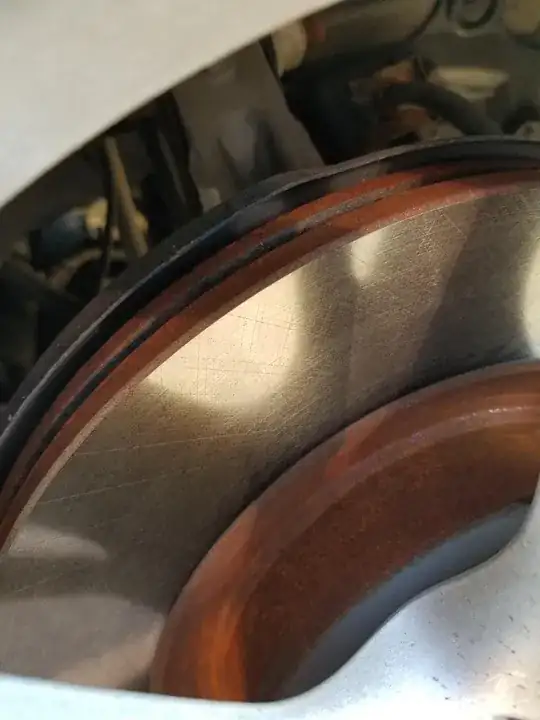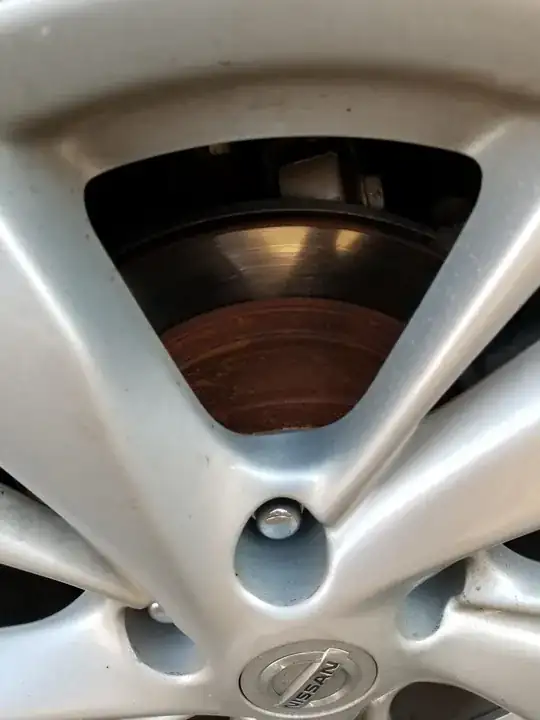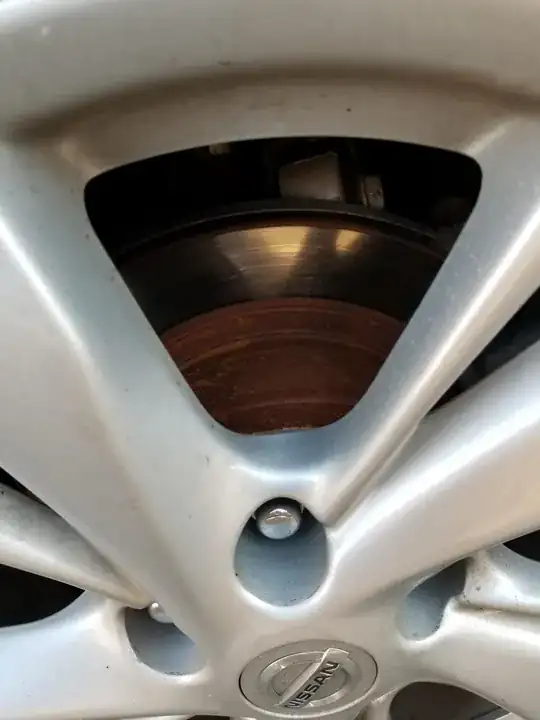While I cannot see the back rotors very well, I can tell you without a doubt, the front rotors are brand new. You can still see the crosshatching on the surface which means it was prepped. It doesn't show any wear at all. The rear brakes (from what I can see) are in good condition as well, though appear to be a bit older and more used.
The misconception you have here is you are basing the wear of rotor on non-wear areas. There's almost always going to be rust in these areas, unless they are zinc coated or are made of carbon fiber. You should base the wear of the rotor on two things. First, the thickness of the rotor (between where the brake pads sit on them). There is a minimum thickness these need to be. This value is sometimes cast into the rotor, or you'd need to find it in a service manual. The second thing to look for is if there is a lot of gouging in the metal from the brake pads, which happens when the brake pad gets worn out.
Usually, you don't have to consider changing rotors until you need to change the brakes. Then, for the best results, you'll either need to machine the surface of the rotor or buy new ones. The idea is to have a completely fresh mating surface for the pads to ride upon, which will give you the best braking performance the rotors/pads can provide. Until then, don't worry about them.


